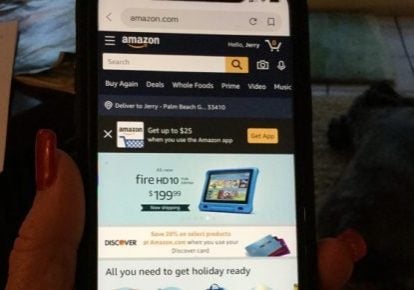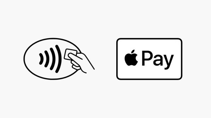
Amazon Alternatives: The Platforming of The Online Buying Experience
Julie Stewart

The ultraconvenient, frictionless buying experience made famous by Amazon is launching some Amazon alternatives from other industry giants eager to monetize more than ad clicks. The GAFA may have started with different core businesses, but when it comes to capturing a share of e-commerce opportunities, they are all headed in the same direction. They’re mimicking the platform that came first: Amazon.
Online buyers are making convenience paramount when choosing where to shop. Increasingly, online buyers are abandoning standalone e-commerce stores in favor of the buying convenience offered by syndicated online marketplaces.
The routine of creating an account at a new online store–entering all your address information, typing in your complete credit card information, creating a separate username and password–is starting to go away. Amazon has spoiled us, and now we expect that kind of convenience everywhere we shop.
Increasingly, most of us prefer to buy from platforms. We buy from platforms because they know our habits and preferences. They know our online buyer persona.
The platforming of the online buying experience is happening because it’s what consumers are demanding more and more – to remove buying frictions.
The concept is hardly new. Way back in 1999 Amazon patented its “1-Click” feature that allows buyers to store all their payment and shipping information in a secure account, and thereafter buy a product any time, from any seller on Amazon, with a single click. It was a game-changer for the industry, but Amazon had a lock on it.
Sadly for Amazon, that patent expired in September 2017. And that’s when the competitive rush began.
Although Google didn’t just introduce their platform to compete with Amazon (it made its debut in 2014), the patent expiration opened a new revenue opportunity for them. Starting in 2018, each of the other GAFA giants made their initial moves into Amazon territory by launching online selling programs for participating merchants that would streamline the buying experience for customers in dramatically new ways.
Google Shopping Actions leverages the power of browsing for products through Google Search and adds their selections to Google Express for Instant Checkout. It includes a number of friction-erasing innovations, such as shop-from-any-device features and a universal shopping cart that lets you collect items from multiple merchants and check out all at once. For merchants enrolled in the Shopping Actions program, Google handles the pay transaction and takes its cut there, rather than using the traditional PPC model as on Google Ads. On the consumer side, if they already have payment info saved in their Google accounts, payment becomes a frictionless, one-click transaction.
Facebook also recently launched Instagram Shopping, which enables Instagram followers who like a product they see in any post to get product information and a direct link to the merchant’s checkout page. That program is currently free for merchants. However, the company is also currently beta testing a “Checkout with Instagram” feature that will allow the whole transaction to remain on Instagram, which would handle the sale and store customers’ payment information. The Checkout service would charge a fee structure similar to Google Shopping Actions.
It’s not just about a consumer’s need for a frictionless buying experience — there is a bigger game being played.
The real battle being waged by the GAFA is the one over your online buying ID.
With Shopping Actions, Google isn’t so much going after PPC action from e-merchants. Now, they just want to collect your orders in their shopping cart.
Similarly, with the “Buy” button on Instagram, Facebook wants your online Buyer ID.

With your online Buyer ID contained in your fingerprint or with facial recognition, Apple is discreetly advancing past the others. At any online store with the familiar icon, there’s no faster checkout than Apple Pay, with Google Pay running a close second. As a third party merchant processing solution, Apple Pay has enabled instant gratification when shopping at any store on an iPhone with a digital wallet.
They are all running to get our Buyer ID. With its 20-year head start, Amazon is still leading this marathon today.
The online buying experience is being platformed because consumers want it as much as the GAFA do. In this new paradigm of frictionless buying, everyone has skin in the game. As those interests intersect, watch the whole, once-disruptive e-commerce world get disrupted again itself.
Request a demo and a free 14-day trial of our powerful automation tools.
Uncertainty about changes in Amazon’s Vendor Central operations is the main reason why brands are ...
When it comes to toys, Amazon sees the power of going offline. For the second year in a row, it’s ...
You’re busy selling on Amazon and everything has been humming along when suddenly a dreaded 4-digit ...
We lift the veil on Amazon’s search algorithm to analyze which ranking factors matter most and ...